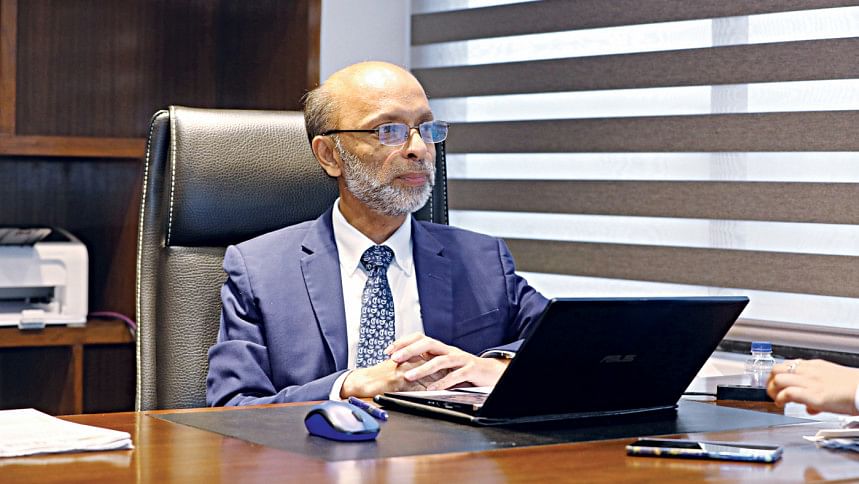More funds and digitalisation needed

A. K. M. Kamruzzaman, FCMA, Acting Managing Director, LankaBangla Finance
Currently, the total contribution of our country's CMSME sector towards our GDP is around 27 percent. Just a year ago, it used to be 24 percent. It is a good sign that the percentage is increasing, but at a slower rate. Japan, an advanced economy with ongoing mega projects and big venture enterprises, has a CMSME contribution of 70 percent towards its GDP. In China, the sector's contribution to the country's GDP is 60 percent. Our neighbouring India, Pakistan, and Sri Lanka have SME contributions to GDP rates of 30 percent, 40 percent, and 52 percent, respectively. Comparing our numbers with those of these countries tells us we still have a long way to go.
Recent data suggests that the total loan from both banks and non-banking financial institutions (NBFI) amounts to roughly more than Tk 16 lakh crore, of which only 10 percent goes to CMSMEs. Of that 1,60,000 crore, around 3.5 percent comes from NBFIs and 96 percent comes from banks. As a NBFI, our stake in this sector is relatively lower, but we are constantly trying to expand our SME portfolio. LankaBangla Finance is currently focused on CMSMEs. In terms of portfolio, LankaBangla is a major player in CMSME sector.
We are growth partners for every business graduating from the micro-level to a bigger scale.
At LankaBangla, our CMSME financing team believes that we are growth partners for every business graduating from the micro-level to a bigger scale. We not only work as financier but also as financial consultants for our clients. We have a partnership with the SME Foundation to provide necessary training to CMSME clients.
The main factors behind our slow progress in this sector include the traditional banking culture of providing mortgage-based loans. Most CMSME entrepreneurs usually don't have the required assets to qualify for a loan. In our experience, most of our well-performing loans were unsecured without a mortgage. What we focus more on is the cash flow of the businesses.
Then comes the issue of regulatory compliance, for which we need to verify the identities of our potential clients. Despite the government's continuous efforts, we have not been yet able to bring the entire population under a smart ID system. The cost of funds resulting from an ever-increasing interest rate is also a major obstacle to the path of development for the SME sector.
Ensuring adequate sources of funding is another major issue we are dealing with. Ideally, the percentage for CMSME-related loans should be around 27 percent, amounting to 4,00,000 crore, aligning it with the sector's contribution to GDP.
Traditionally we prefer that manufacturing and service-oriented businesses generate more employment than trading businesses. To maintain a stable supply chain, trading businesses dealing with local products should be promoted. Meanwhile, the SME Foundation should be empowered with additional funding and human resources. All identification and verification systems should be integrated into one digital system to lower loan processing, monitoring, and transaction times which will also help to reduce cost of doing business. The digitalisation of financial services could be the game changer we need to develop our CMSMEs further.

 For all latest news, follow The Daily Star's Google News channel.
For all latest news, follow The Daily Star's Google News channel. 



Comments